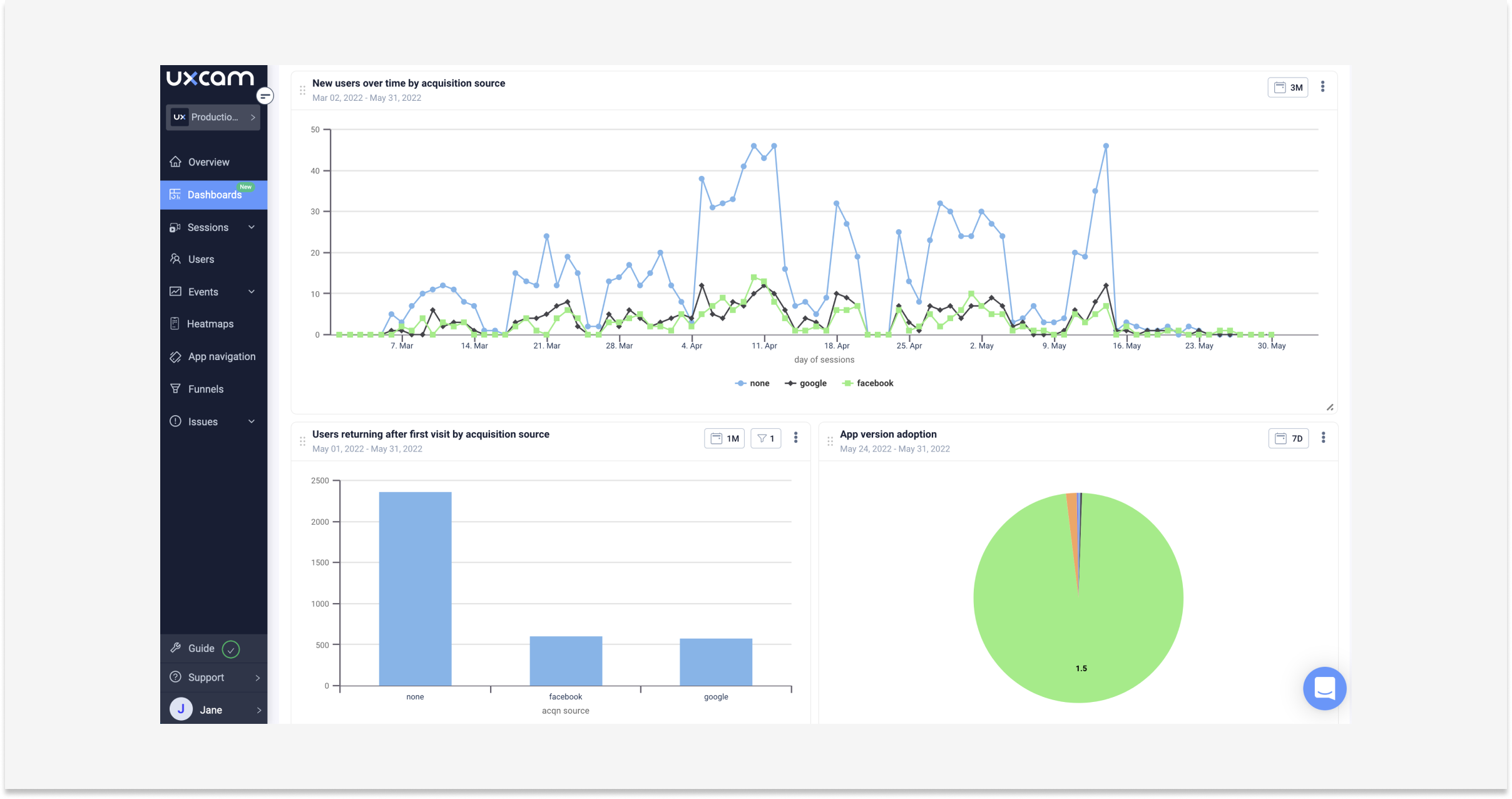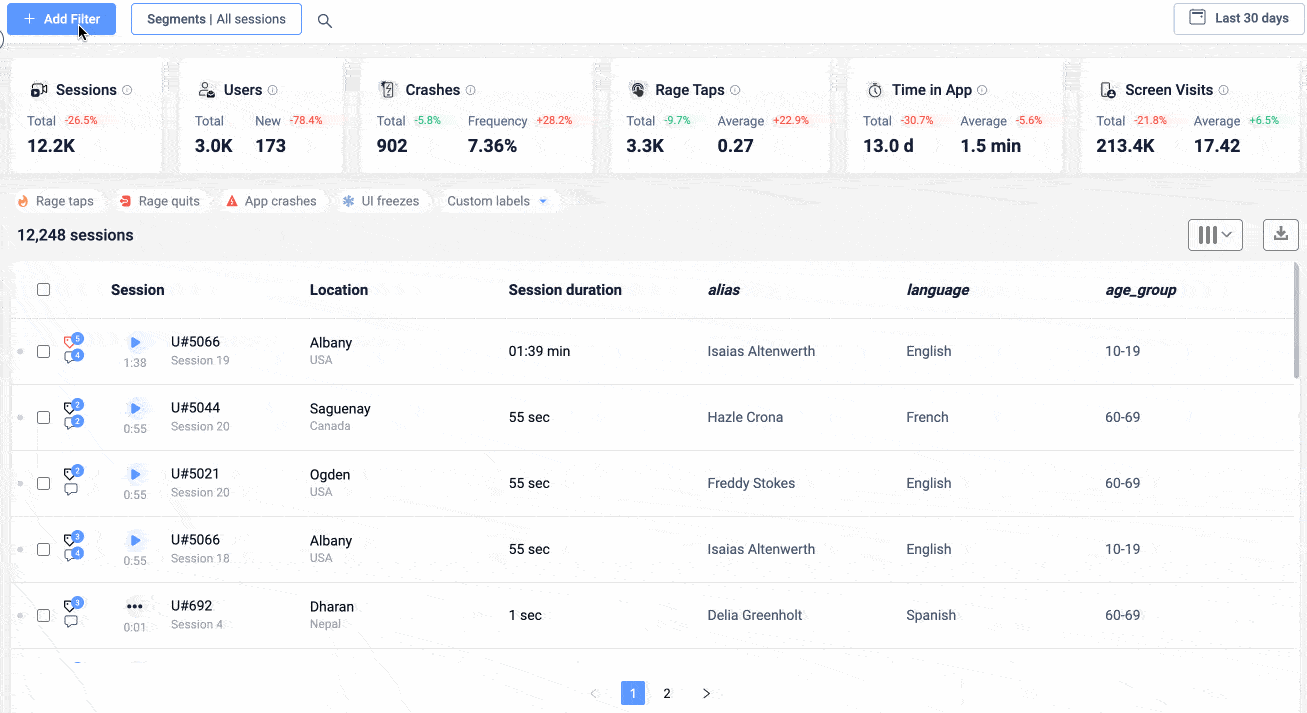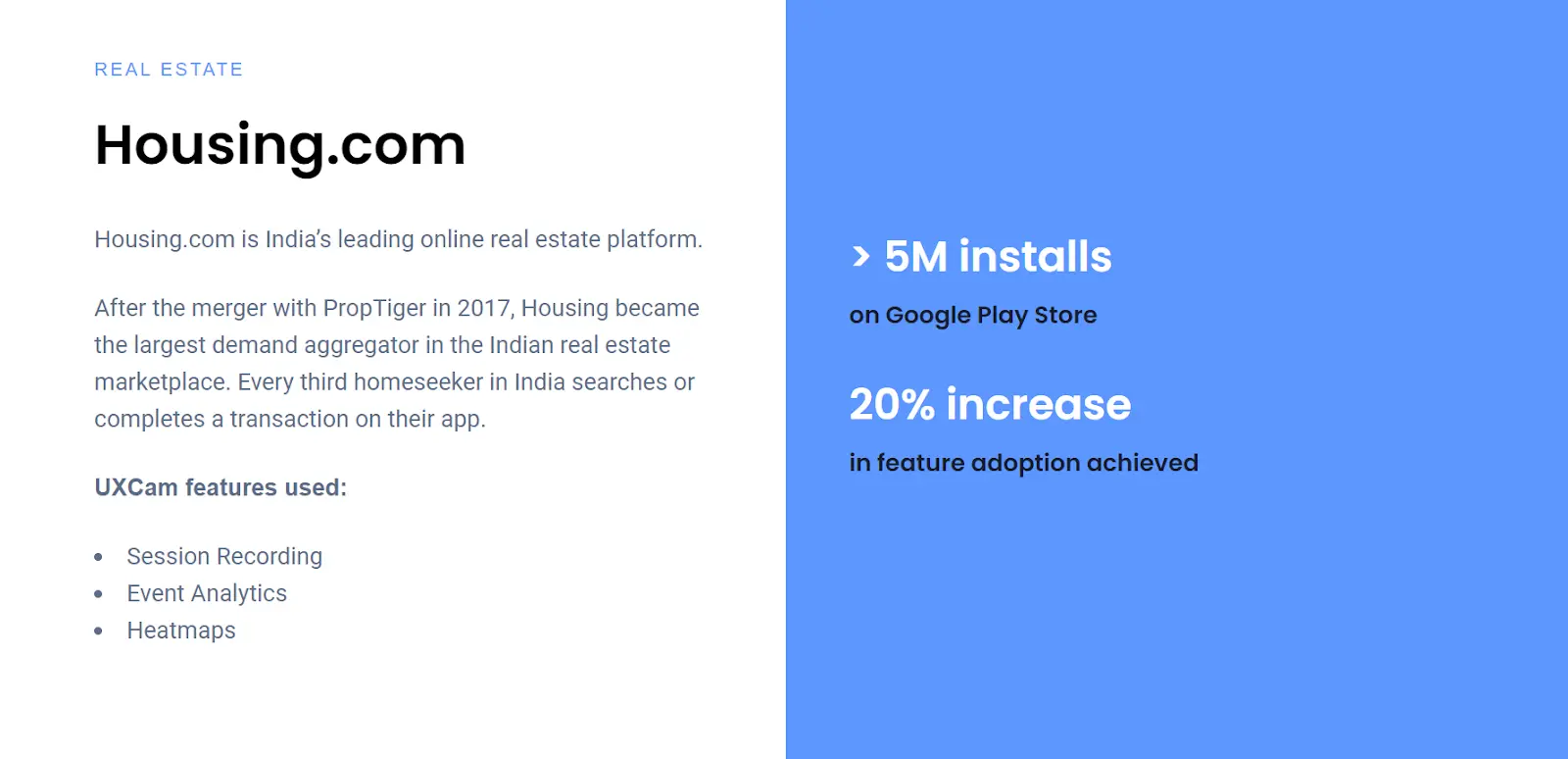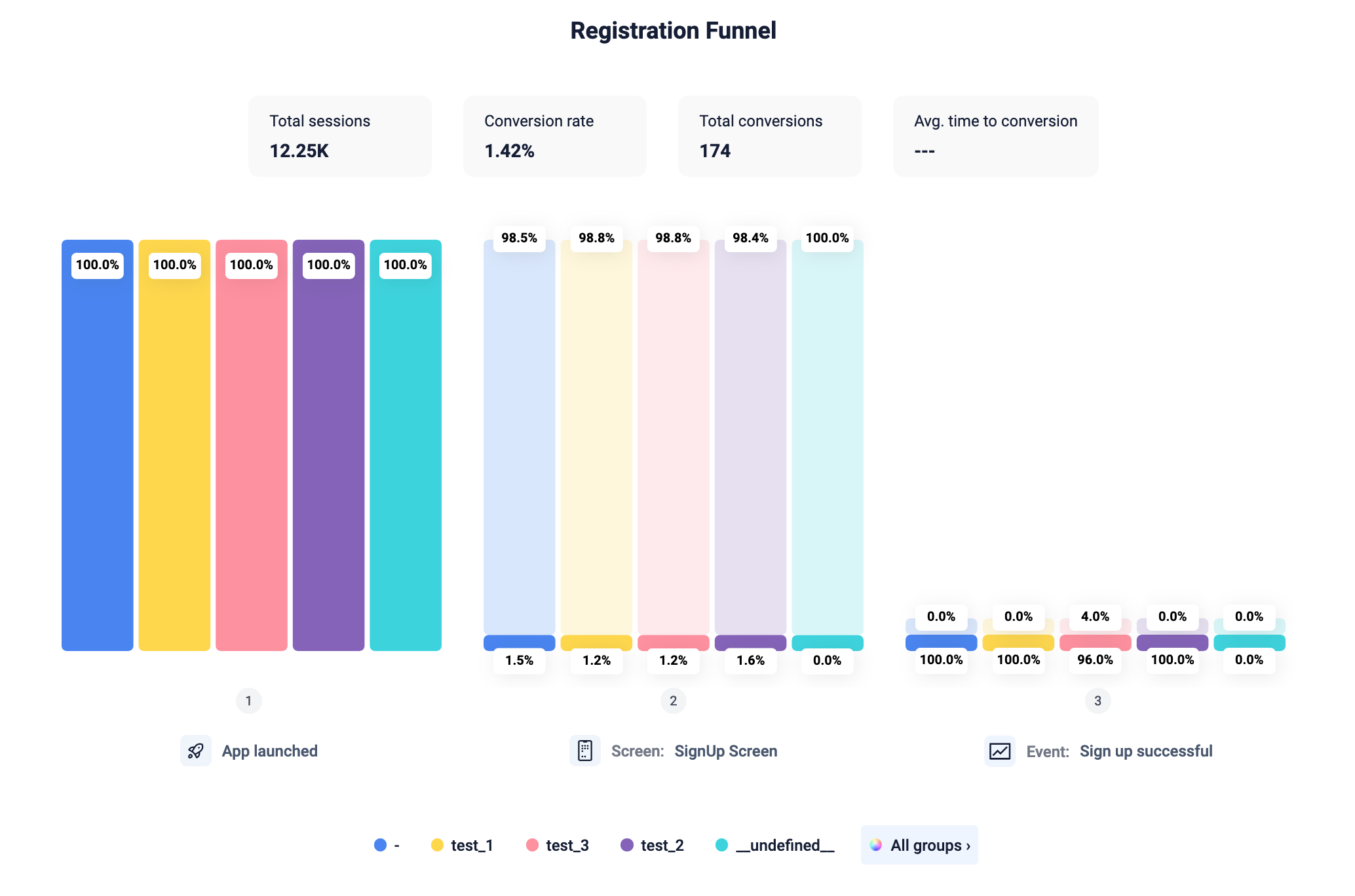Back to blog
8 MIN READ
User Stories in Product Management - An In-depth Guide
PUBLISHED
11 December, 2023

Product Analytics Expert
User stories are a fundamental aspect of product management, especially in mobile app development. They provide a user-focused framework that drives collaboration, creativity, and ultimately, a better product.
User stories are simple, quick descriptions of how a user will use a product to achieve a goal. They keep the product user-focused, promote cooperation and communication between team members, and help prevent feature creep. Importantly, they represent bite-sized deliverables that can fit in sprints and build momentum.
At UXCam, we know that good user stories are based on data. In this guide, we will delve deeper into the importance of user stories, how to write them effectively, and how they can transform your product management process.
Stay tuned!
What is are user stories in product management?
A user story is a concise way of expressing a feature or functionality that a user wants or needs from a product. It helps to define the user's problem and the value that the product can provide.
User stories typically follow this structure:
“As a [user persona], I want to perform [action] so that I can accomplish [goal]”.
For mobile app product managers, a user story is a tool to understand how a user interacts with the app and what they want to achieve with it. It focuses on a specific functionality of the app, like making a purchase, transferring money, or any other end goal of the app. User stories help PMs to prioritize and plan the woprork needed to deliver an app feature.
Here are some examples of user stories
As a customer service representative, I want to be able to create an account so that I can personalize the customer's experience within the app.
As a sales associate, I want to search for products by category so that I can easily find what the customer is looking for.
As a shopper, I want to be able to add items to my shopping cart and proceed to checkout so that I can make a purchase.
As a marketing manager, I want to send notifications about upcoming sales or promotions so that customers can take advantage of them.
As a logistics coordinator, I want customers to be able to track their order status so that they know when their package will arrive.
UXCam is a tool that helps mobile app product managers write user stories by capturing and analyzing user behavior, feedback, and emotions. UXCam records user sessions, screen views, gestures, events, crashes, and more. It also provides heatmaps, funnels, cohorts, and other tools to help product managers identify user pain points, preferences, and expectations.


By using UXCam, mobile app product managers can write user stories that are based on real data and insights, and deliver better user experiences.
Importance of user stories in product management
Focuses on the user
User stories serve as a beacon, directing the project team's attention to the user's experience rather than mere task completion. By encapsulating the user's role, goals, and expected benefits, these stories emphasize problem-solving for the end user.
This user-centric approach ensures that the development process revolves around addressing real issues faced by the target audience, ultimately leading to a more satisfactory and functional product.
Promotes collaboration
One of the key strengths of user stories lies in their ability to clearly define end goals. By providing a narrative that outlines the user's journey, teams can collaboratively decide on the best routes to achieve those goals.
This collaborative approach aligns the team and ensures that the end user's needs are at the forefront of decision-making. The transparency offered by user stories promotes effective communication and enhances the overall efficiency of the development process.
Drives creativity
User stories break away from the monotony of task-oriented development by inspiring creativity and critical thinking. Instead of focusing on uninspiring tasks, the team is encouraged to think about user-centered solutions. This shift in perspective sparks innovation, leading to more thoughtful and impactful features.
User stories serve as a catalyst for brainstorming sessions, allowing the team to explore diverse ideas and approaches to address the user's needs creatively.
How to write effective user stories for product management
Identify your app's user base
Identify weaknesses with existing features
Identify feature gaps to fill
Craft user stories in a clear and compact format
Incorporate essential acceptance criteria
Collaborate with your team to review the story
Step 1 - Identify your app's user base
User stories use personas to delineate the diverse user profiles your app may cater to. This approach facilitates a comprehensive understanding of user needs and preferences.
To identify your app's user base, it's essential to create user stories that use personas. Personas represent fictional but realistic characters that represent different user profiles. By using personas, you can gain a comprehensive understanding of the needs, preferences, and expectations of your target audience.
Here’s how to get started:
Segment user data. User a tool like UXCam to collect and segment in-app data. Look for patterns using tools like session recordings that allow you to observe exactly how users interact with your app. This includes things like screen taps, swipes, and gestures, providing a holistic view of the user experience.

Flesh out segments. Target your segments with surveys, interviews, and other forms of user research to better understand their needs, preferences, and pain points. This will enable you to tailor your products or services specifically to each segment, maximizing customer satisfaction and ultimately driving business growth.
Draft personas. Create documents that detail the information you've collected and share them with the team. Give your personas a name to make them more relatable. Include demographic information like age, gender, and occupation. Consider goals, motivations, and pain points.
For example, you may have a persona named “Sarah,” a 35-year-old marketing professional who lives in a metropolitan area and enjoys outdoor activities.
Step 2 - Identify weaknesses with existing features
By recognizing areas where current features may be lacking, you can work towards enhancing them to better meet the needs and expectations of users. To identify weaknesses, it's essential to gather feedback from users and analyze their experiences. This can be done through methods like surveys, user testing, or customer support interactions.
You can also leverage customer experience tools like UXCam to gather actionable insights.

UXCam helped Housing.com identify weaknesses in their existing feature set through session recordings, event analytics, and heatmaps. By reviewing session recordings of users interacting with features, the team at Housing.com discovered that users struggled to search for houses across multiple cities.
Adding in this simple feature led to a 20% increase in feature adoption.
Step 3 - Identify feature gaps to fill
To identify feature gaps, you can review user feedback, including customer reviews, surveys, and support tickets to identify recurring pain points or areas where users are requesting new features.
You can also conduct user research, like interviews or usability testing, to assess the user-centric value of your feature and identify any missing features or functionality that would enhance their experience.
To assess the user-centric value of your feature, consider the following:
User needs: Identify the specific needs and pain points your feature addresses.
User feedback: Gather insights from users who have tested similar features.
Usability and convenience: Evaluate how the feature improves usability and saves time.
Personalization: Determine if the feature allows for customization.
Efficiency: Assess if the feature increases productivity.
Value proposition: Clearly communicate the unique value the feature offers.
Long-term benefits: Consider how the feature adapts to changing needs.

UXCam provides valuable insights into user behavior by capturing and analyzing user sessions. This feature allows product managers and UX designers to see exactly how users are interacting with their app or website, helping them identify pain points, areas of confusion, and opportunities for improvement.


UXCam also offers personalization options through its customizable analytics dashboard. You can choose which metrics to track, set custom events, and create custom funnels to analyze specific user journeys.
This level of customization allows businesses to tailor their analytics to their unique needs and goals, enabling them to gain deeper insights into their users' behavior and make data-driven decisions that align with their objectives.
Step 4 - Craft user stories in a clear and compact format
Once you have a list of potential in-app issues your user personas will want addressed, it’s time to craft user stories that capture them.
The best user stories are succinct and explicitly define the user, their objective, and the reason behind it. Use an uncomplicated structure, expressing the user's role, the desired feature, and the anticipated benefit in a single, informal sentence.
Follow the pattern:
“As [a user persona], I want to perform [action] so that I can accomplish [goal]”.
Step 5 - Incorporate essential acceptance criteria
Clearly outline the necessary actions or interactions within the app required to achieve the desired outcome from the user.
To incorporate essential acceptance criteria into the app, it's important to clearly outline the necessary actions or interactions required from the user. This serves as a guideline for the development team and ensures that the app meets user expectations.
Example acceptance criteria for a social media app registration process:
User registration: Provide a clear and intuitive registration process, validating entered information and displaying appropriate error messages.
Email verification: Send a verification email with a unique link to confirm the user's email address and activate their account.
Profile setup: Outline steps for setting up a profile, including uploading a picture, adding a bio, and selecting interests.
Connecting with friends: Specify methods for finding and connecting with friends, like searching by email or suggesting connections based on mutual contacts or interests.
Posting content: Define how users can share content, including types of content, captions, and privacy settings.
Tip: Avoid adding in unnecessary details—these can stifle creativity and add unnecessary complexity to the project.
Step 6 - Collaborate with your team to review the story
Ensure a shared understanding within the team by collectively reviewing and discussing the user story. This collaborative approach guarantees that each team member comprehends the user story and can contribute effectively to its realization.
During the review process, encourage team members to ask questions, share their insights, and provide feedback on the user story. This open dialogue will help identify any potential gaps or misunderstandings and make sure that everyone is aligned on the scope and objectives of the story.
Conclusion
User stories are a powerful tool for mobile app development, as they help to define the features and functionalities that users need and want. They also help to align the vision and goals of the product managers, developers, designers, and stakeholders, and to prioritize the most important and valuable tasks.
UXCam is a platform that helps you to create and validate user stories for your mobile app. With UXCam, you can capture user feedback, analyze user behavior, and optimize user experience. You can also track and measure the impact of your user stories on key metrics like retention, engagement, and conversion.
Sign up for free today and start delighting your users. You might also be interested in these;
User stories vs. use cases: a comprehensive guide
12 Best product management tools 2023 & when to use them
8 Important product management templates for mobile app teams
Go-To-Market strategy in product management: guide + checklist
Product management and user experience - how to collaborate effectively
AUTHOR

Tope Longe
Product Analytics Expert
Ardent technophile exploring the world of mobile app product management at UXCam.
What’s UXCam?
Related articles
Session Replay
Mobile Session Recording - The Complete Guide 2026
Why session replay is such a valuable feature, and what you should look out for when starting...

Annemarie Bufe
Product Analytics Expert
Product Management
14 Best Product Development Software for Every Team 2025
Discover the 14 best product development software tools to streamline collaboration, track progress, collect feedback, and build better products...

Tope Longe
Product Analytics Expert
Product Management
13 Best Product Management Tools 2025 & When to Use Them
Find out the top tools that the best product managers use daily to perform better at...

Jane Leung
Product Analytics Expert
